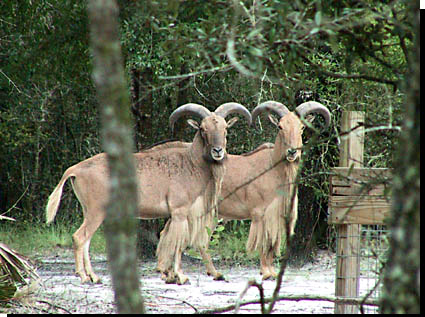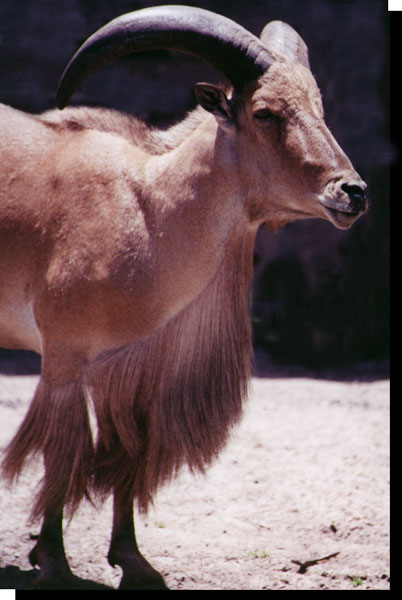|
Aoudads
are large animals with the average male weighing around 200lbs, but they
can go from 110 to 350lbs. Male heights are 36 to 39", with the females
usually five inches shorter than the males. Their weights range from 90 to
125lbs. Aoudads are tan with a large neck mane on the front and the back
of their necks, and they have unusual tufts of hair, called chaps, that encircle
their front legs.
The female aoudads have horns as well as the males.
The horns are impressinve with a wide base a backward curl that gooes upward
and outward. The horns are ridged on the front surface.
The record
for aoudad horns is 36.6", and exceptional bases can reach 14 to 16". Female
horns can sometimes be larger than the males'! The females size range is
12 to 27", while male horns can be from 14 to 36". The more common male lengths
though are 26 to 32".
The aoudads' first choice of feed is forbs, but they are adaptable, and will easily switch
to grass, and when grass is not available they go on to eat browse. Unlike
sheep, the aoudads are resistant to parasites and disease. This in addition
their dietary adaptability makes them strong survivors.
 |
These are two male aoudads, but the females are not noticeably different.
Socially, aoudads form groups of females and young adult males, usually with a female leader.
The older males join up in bachelor groups. During the rut, however, the
male groups break up, and then mixed groups form, then, in the rut, the dominant males
usually become the leaders. The rutting males spar
much as sheep do with pushing and head butting that produces earth shaking
cracking sounds. While the wild aoudads adhere to a seasonal breeding cycle,
in captivity births can occur at anytime of the year.
|
| ANIMALS |
If you do not see a navigation bar on the
left, you can click here to go HOME.
|

